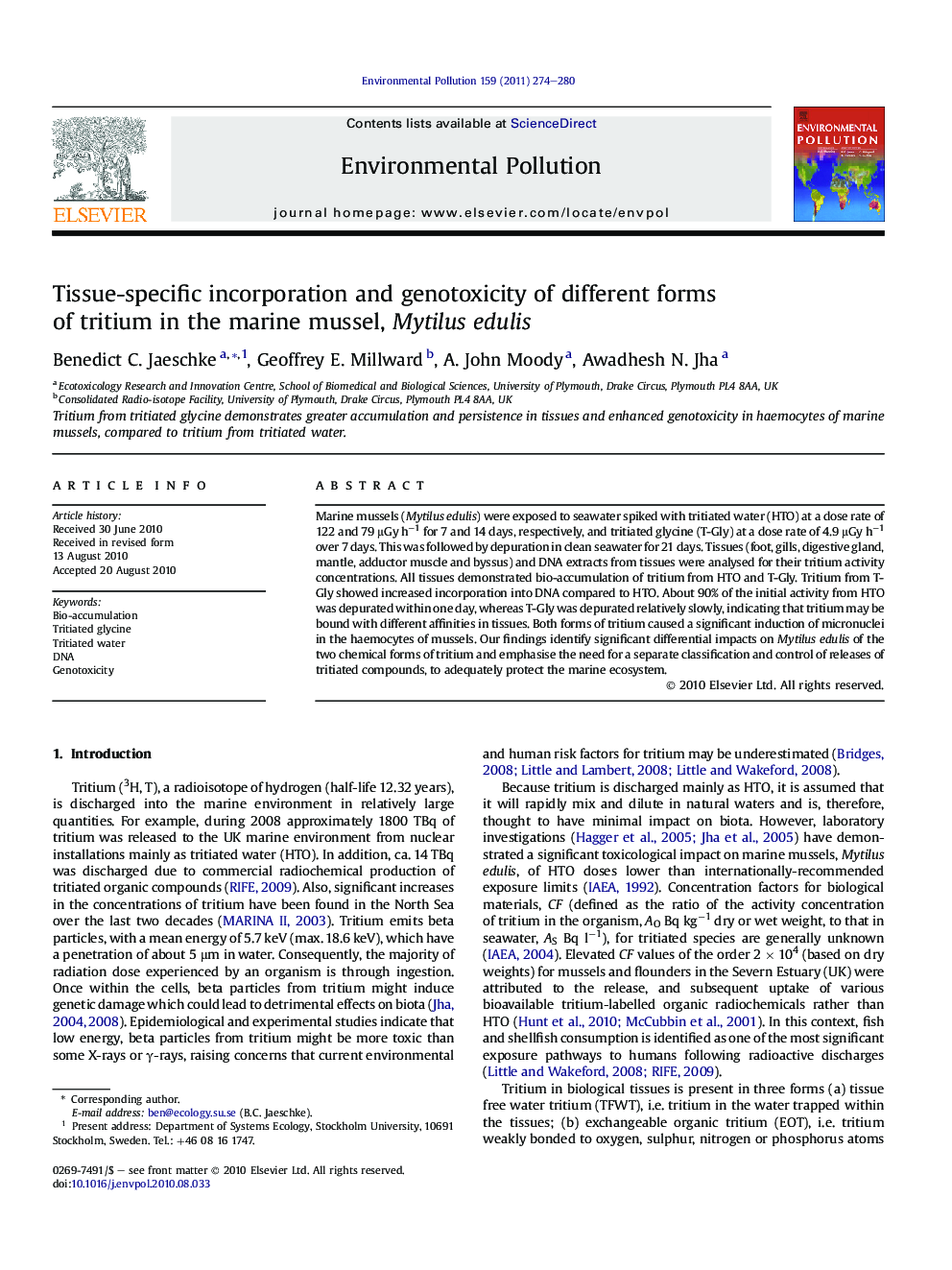| Article ID | Journal | Published Year | Pages | File Type |
|---|---|---|---|---|
| 4425648 | Environmental Pollution | 2011 | 7 Pages |
Marine mussels (Mytilus edulis) were exposed to seawater spiked with tritiated water (HTO) at a dose rate of 122 and 79 μGy h−1 for 7 and 14 days, respectively, and tritiated glycine (T-Gly) at a dose rate of 4.9 μGy h−1 over 7 days. This was followed by depuration in clean seawater for 21 days. Tissues (foot, gills, digestive gland, mantle, adductor muscle and byssus) and DNA extracts from tissues were analysed for their tritium activity concentrations. All tissues demonstrated bio-accumulation of tritium from HTO and T-Gly. Tritium from T-Gly showed increased incorporation into DNA compared to HTO. About 90% of the initial activity from HTO was depurated within one day, whereas T-Gly was depurated relatively slowly, indicating that tritium may be bound with different affinities in tissues. Both forms of tritium caused a significant induction of micronuclei in the haemocytes of mussels. Our findings identify significant differential impacts on Mytilus edulis of the two chemical forms of tritium and emphasise the need for a separate classification and control of releases of tritiated compounds, to adequately protect the marine ecosystem.
